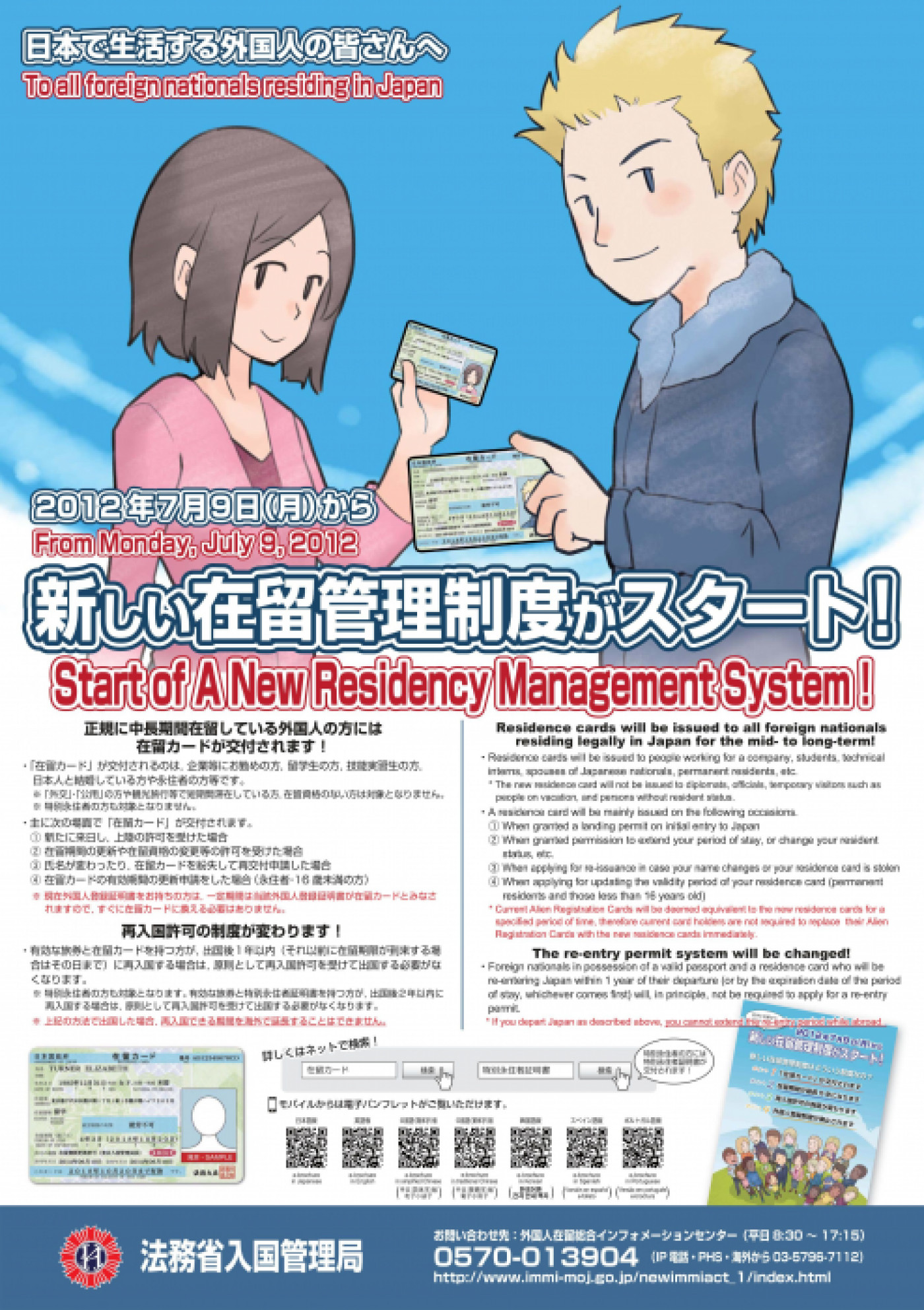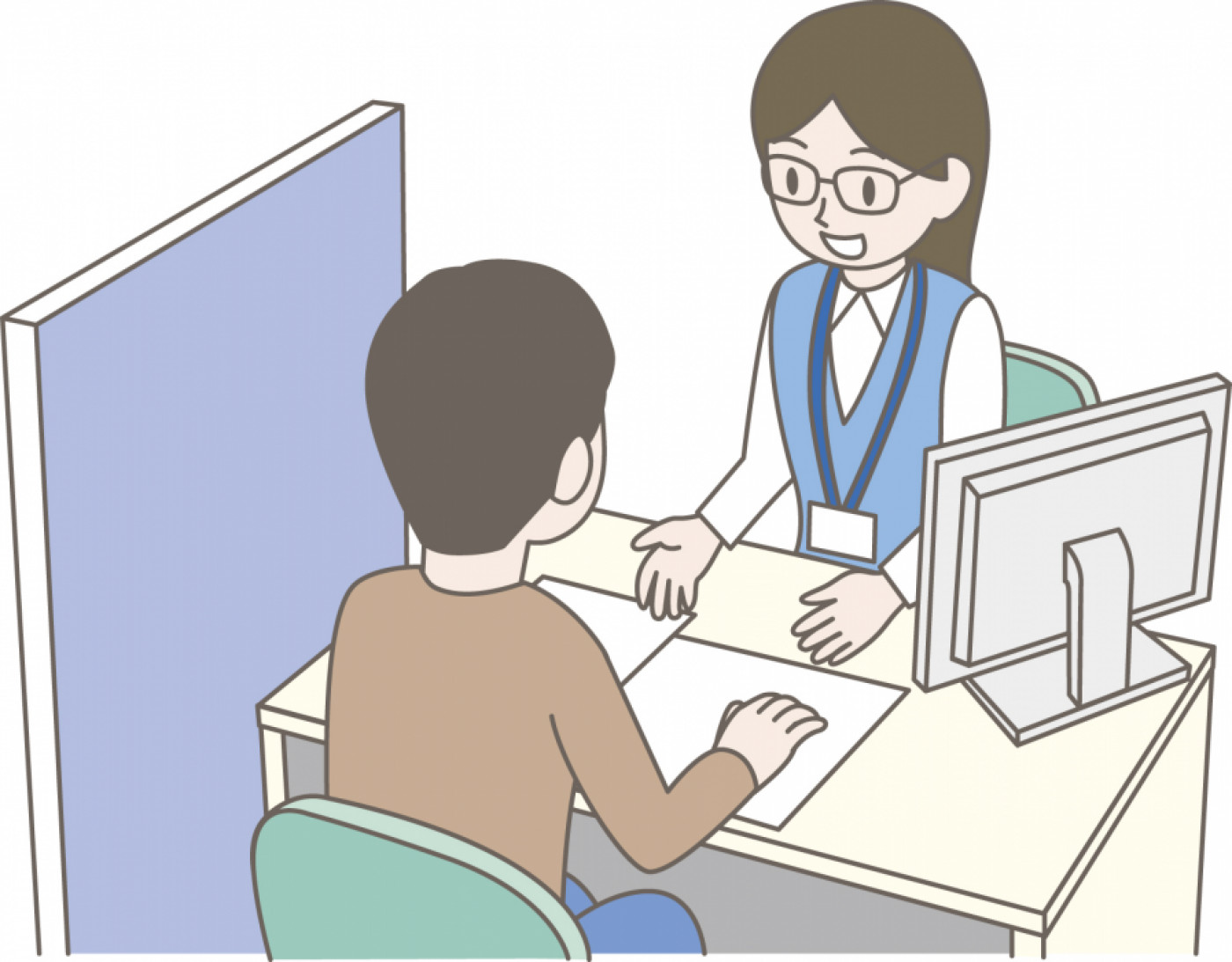A Residence Card is an important identification document for foreign residents in Japan. We need it for almost everything related to showing and proving identity including staying a night in a hotel, signing up for services, etc. In the main part of this article, we explain how to get your residence card and the first thing you need to do with it - registering your address.
Table of Contents
- What is a “Residence Card” or “Zairyu Card”?
- How to Get Residence Card in Japan
- First Thing To-Do After Getting Residence Card
- Update Address Whenever You Move Residence
- Keep Your Japan Residence Card With You At All Times
- Summary
What is a “Residence Card” or “Zairyu Card”?

「在留カード」Zairyu Card, or Residence Card, is an identity card issued to mid to long term foreign residents in Japan as proof of their status of residence. Personal information included on the front of your residence card includes your name, birthdate, nationality, address, status of residence, period of stay, expiration date, and residence card no.

On the back of the residence card is some space for entering your new address whenever you move, a small space on the bottom right to indicate that your application for extending period of stay or change of residence is in progress, and the long space next to it is to indicate permission to do activities outside your scope of status of residence.
Is a Residence Card the same as a My Number Card?
No, your residence card is totally different from a My Number Card. This is how a My Number Card looks like:

Information about your status of residence and other information related to it cannot be found on your My Number Card, instead it contains an individual identification number. You can read up more about My Number Card, what it's for, and how to get one in this article.
Is a Residence Card the same as a Japan Visa?
No, it’s not.
Your visa is used to enter Japan and is printed inside your passport. You will no longer need it once you’ve entered Japan. Your Residence Card is your ID which you need to carry with you at all times. Many people often mistake the both which we’ve explained in part of an article under “Is a Visa the same as a Status of Residence?”
What is the Japan Alien Card?
This is actually quite old news dating back to 10 years ago but you might be curious about what the alien card is and whether it’s still around.

Image Credit: © ISA
The Alien Registration Certificate 「外国人登録証明書 gaikokujin touroku shoumeisho」, is an identity card issued under the Alien Registration System (外国人登録制度) to foreign nationals as an identity card.

From July 9 2012, the system was abolished and replaced with a new residency management system called the Basic Resident Registration Network System (住民基本台帳ネットワークシステム), or Juki Netto (住基ネット) for short. Under the new system, Residence Cards were issued in replacement of Alien Cards. This was a step to a new (and better sounding) direction as being called "aliens" is understandably quite offensive.
Holders of “alien cards” were requested to visit their nearest regional immigration bureau to have their “alien cards” exchanged for a residence card.
※ ISA, “新しい在留管理制度がスタート!” ※ The City of Hiroshima, “The New System for Foreign Nationals Living in Japan”
Writer's Pick
How to Get Residence Card in Japan

You can receive your residence card on the spot when passing airport immigration upon showing your valid passport and Japan visa. However, this is only the case for arrivals at Japan’s larger scale airports:
-
Tokyo - Narita Airport, Haneda Airport
-
Osaka - Kansai Airport
-
Nagoya - Chubu Airport
-
Hokkaido - New Chitose Airport
-
Hiroshima - Hiroshima Airport
-
Fukuoka - Fukuoka Airport
For arrivals at other airports or ports, you will have to proceed with address registration at your municipal office (more on this below). Thereafter, your residence card will be sent to you by post mail.
Other instances where residence cards are issued include:
-
Approval of extension of period of stay in Japan, aka visa extension/renewal in Japan
-
Approval for change of status of residence, for example student to work
-
Approval for acquisition of status of residence
※ Immigration Services Agency of Japan (ISA), “Living and Work Guidebook for Foreigners” Pg 1-2
First Thing To-Do After Getting Residence Card

Within 14 days of moving into your Japanese residence, visit your municipality or ward office (市役所 shiyakusho・区役所 kuyakusho) to register your address. This is done by submitting a moving-in notification (転入届 tennyu-todoke).
To submit this notice, you will need to bring your residence card or passport (in the case you do not have a residence card yet).
After the procedure is completed, three (or four) things will happen:
-
Your new address will be registered on your residence card
-
Your Certificate of Residence (住民票 jyuuminhyou) will be created
-
You will be assigned a My Number and will receive a My Number Notification Card by mail
-
You will receive your residence card by mail (if applicable)
※ ISA, “Living and Work Guidebook for Foreigners” Pg 13
Update Address Whenever You Move Residence

There are procedures to follow whenever you move residence and change addresses. What document(s) you need to submit depends on where you are moving:
Different Municipality
-
Within 14 days before moving out, submit a moving-out notification (転出届 tenshutsu-todoke) to the municipality office you are moving out of.
-
Within 14 days of moving in, submit a moving-in notification (転入届 tennyu-todoke) to the municipality office whose municipality you are moving into.
Within the Same Municipality
-
Within 14 days after moving, submit a change of address notification (転居届 tenkyo-todoke) to the municipality office.
Out of the Country
-
Within 14 days before moving out, submit a moving-out notification (転出届 tenshutsu-todoke) to the municipality office.
Bring your residence card with you when submitting your moving-in/change of address notification.
If you do not, you will need to submit a Notification of Address (住居地の届出書) to the municipality office within 14 days of moving-in to your new place instead.This can be tiresome and entirely avoidable.
Note: Remember to update your My Number Card as well.
※ ISA, “Notification of Change of Address (mid to long-term residents)”
Keep Your Japan Residence Card With You At All Times
We’ve mentioned this many times in other articles but it’s super important so we’ll say it again.
Carry Your Residence Card With You At All Times
Why? Because the consequences are severe.
According to the Immigration Services Agency of Japan’s FAQ on Residence Card:
-
Failure to carry your residence card with you is punishable by a fine of up to 200,000 yen
-
Failure to show your residence card upon request by officials is punishable by a fine of up to 200,000 yen or up to 1 year imprisonment
※ ISA, “Answer (Q1 ~ Q77), Q.34”
Summary
To summarise what we’ve covered in this article:
-
Residence Card is an ID for mid to long term foreign residents in Japan.
-
It is not to be confused with a visa or My Number Card.
-
You can get it at airport immigration but only at large-scale airports.
-
If not, get it from your municipal office when registering your address.
-
First thing to do is submit a move-in notice to the municipal office.
-
Always bring it when submitting move-in/change address notice.
-
Carry it with you at all times or risk punishment.




















.jpg)














